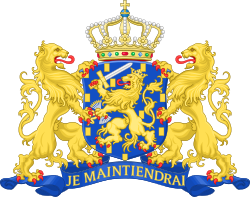First Gerbrandy cabinet Second London cabinet | |
|---|---|
| Cabinet of the Netherlands | |
| Date formed | 3 September 1940 |
| Date dissolved | 27 July 1941 (Demissionary from 12 June 1941) |
| People and organisations | |
| Head of state | Queen Wilhelmina |
| Head of government | Pieter Sjoerds Gerbrandy |
| Deputy head of government | Hendrik van Boeijen (De Facto) |
| No. of ministers | 10 |
| Ministers removed | 2 |
| Member party | Roman Catholic State Party (RKSP) Social Democratic Workers' Party (SDAP) Anti-Revolutionary Party (ARP) Christian Historical Union (CHU) Free-thinking Democratic League (VDB) Liberal State Party (LSP) |
| Status in legislature | National unity government War cabinet |
| History | |
| Legislature terms | 1937–1946 |
| Predecessor | Second De Geer cabinet |
| Successor | Second Gerbrandy cabinet |
| Part of the Politics series |
 |
|---|
| |
The First Gerbrandy cabinet , also called the Second London cabinet was the executive branch of the Dutch government-in-exile from 3 September 1940 until 27 July 1941. The War cabinet was formed by the christian-democratic Roman Catholic State Party (RKSP), Anti-Revolutionary Party (ARP) and Christian Historical Union (CHU), the social-democratic Social Democratic Workers' Party (SDAP), the social-liberal Free-thinking Democratic League (VBD) and the conservative-liberal Liberal State Party (LSP) after the resignation of the previous Cabinet De Geer II. The national unity government (War cabinet) was the second of four war cabinets of the government-in-exile in London during World War II. [1]









